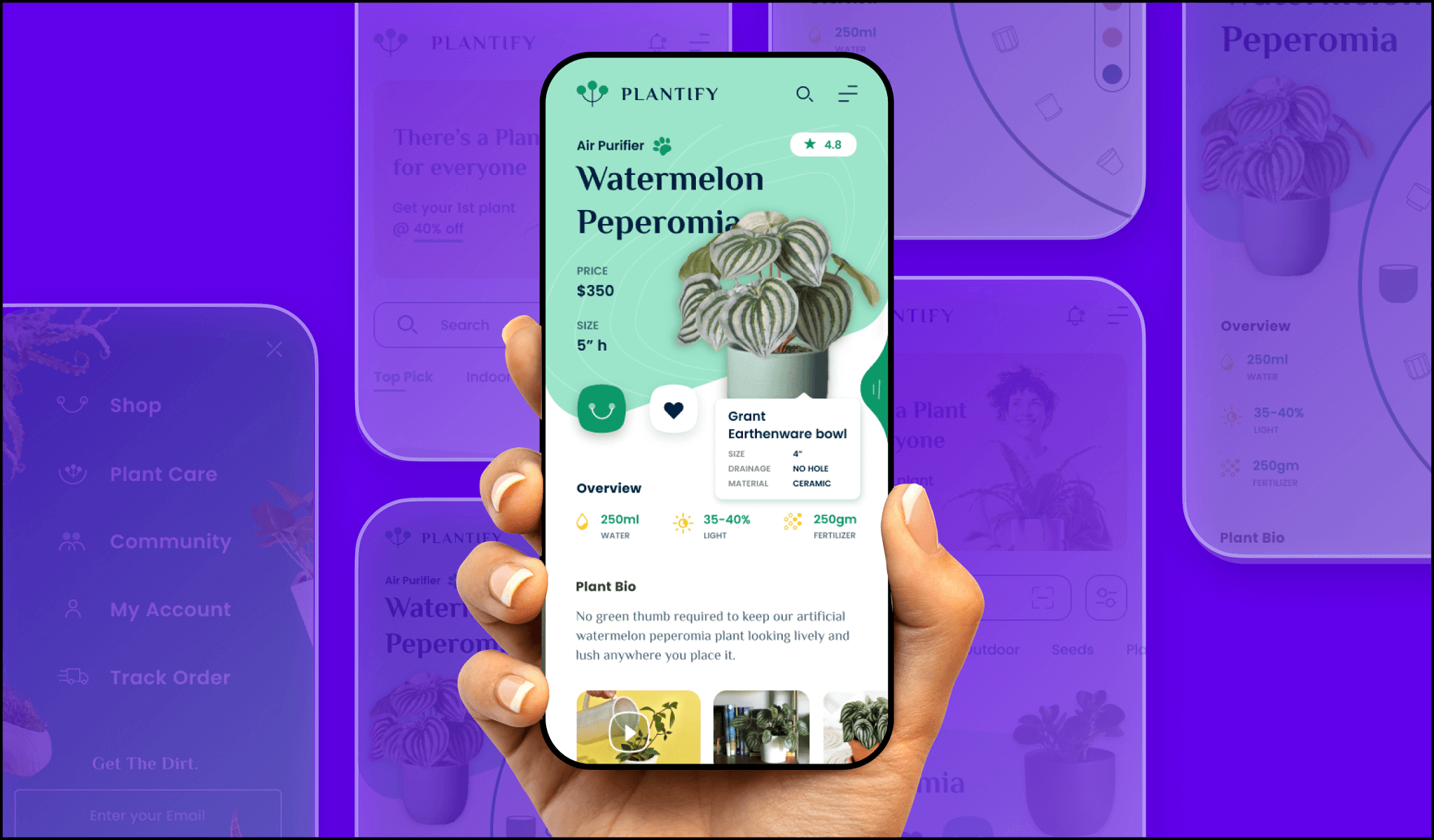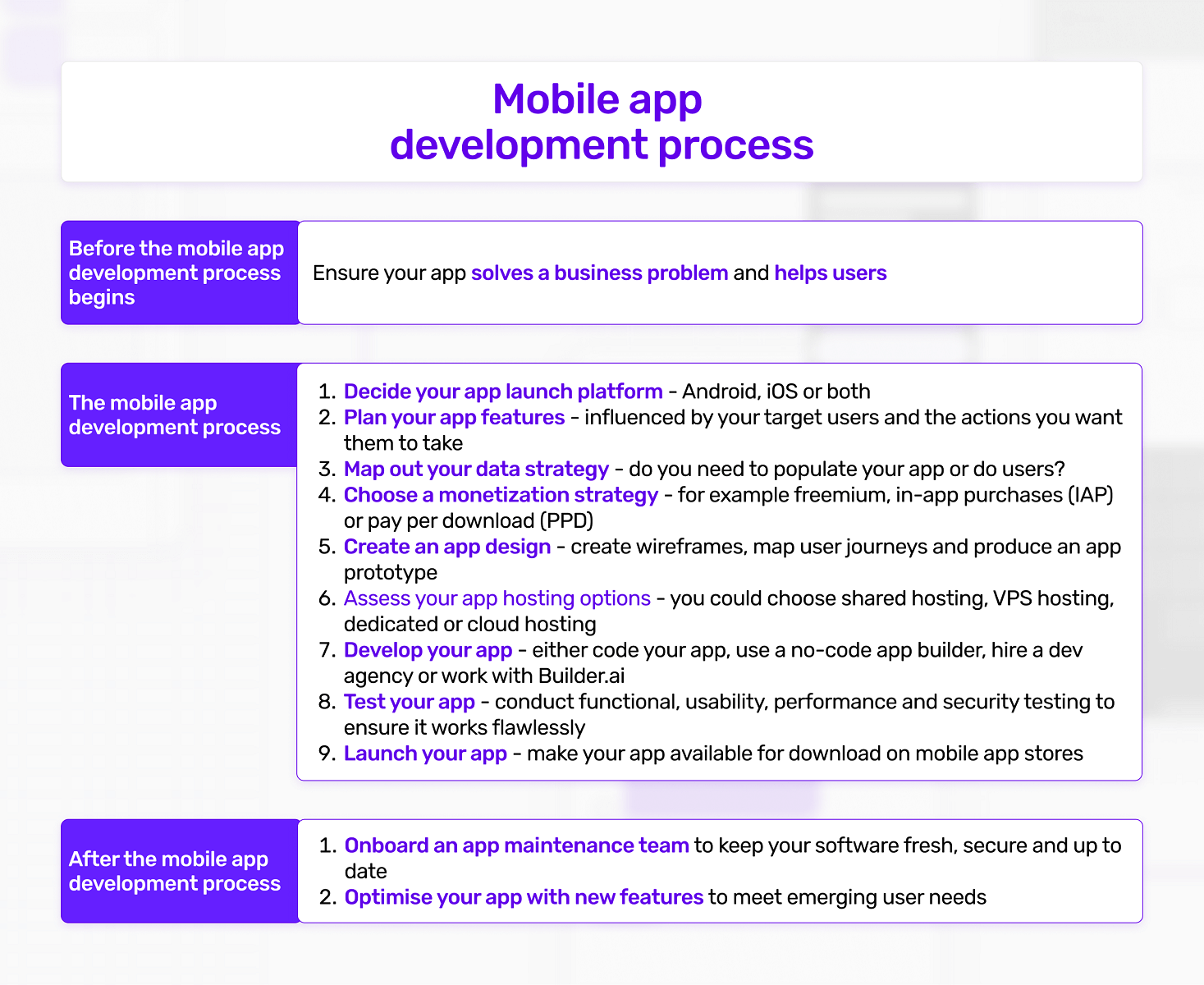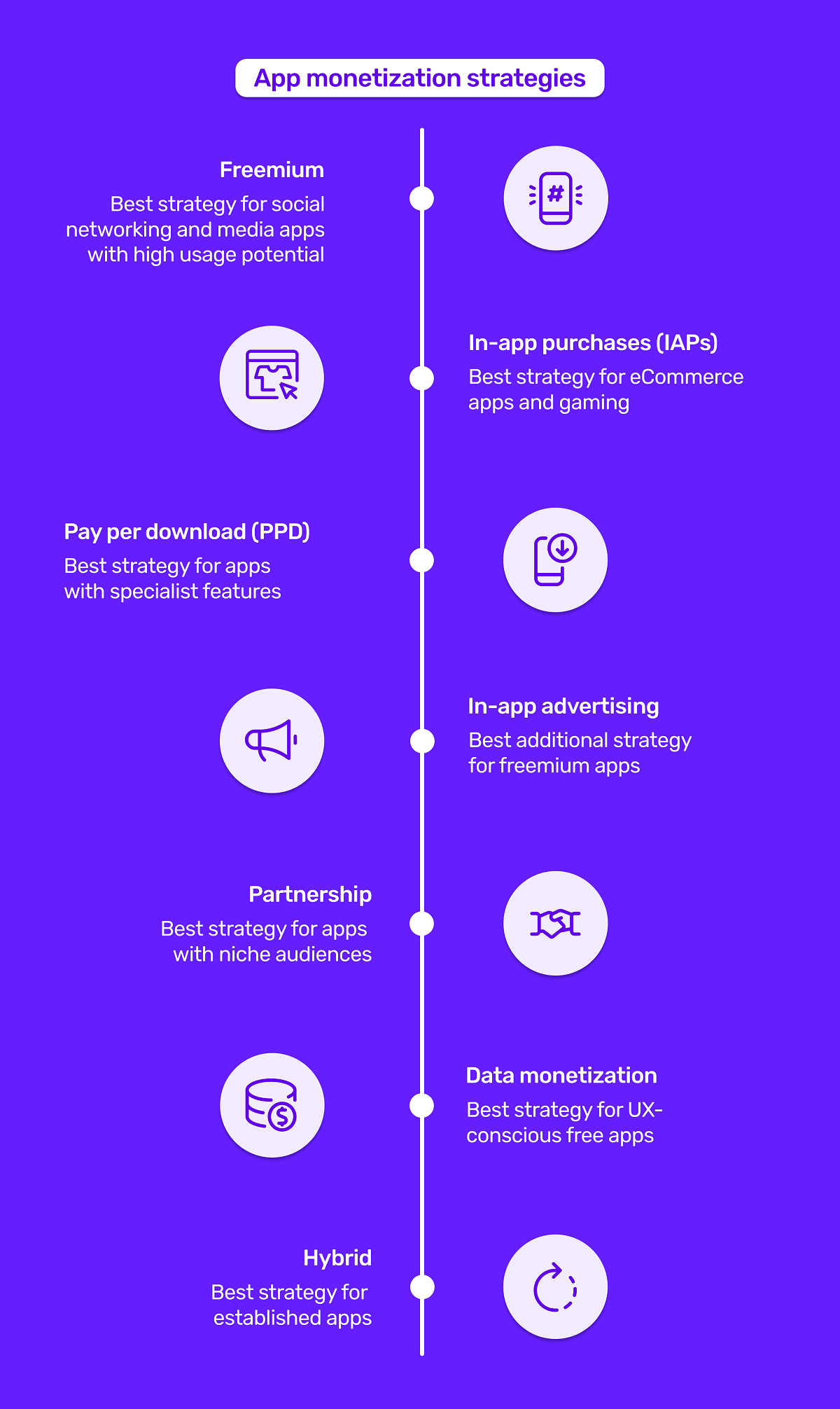 app in hand having multiple app screens in background" width="1584" height="1086" />
app in hand having multiple app screens in background" width="1584" height="1086" /> app in hand having multiple app screens in background" width="1584" height="1086" />
app in hand having multiple app screens in background" width="1584" height="1086" />
We are on a mission to unlock everyone’s potential with the power of software! Our combined approach of AI, automation and talented humans means that your background, tech knowledge or budget will never hold you back.
Kick-off your app project today
There can be no bones about it:
App owners have to put the work in well before the mobile app development process begins to give their projects any chance of succeeding.
That means having a solid business plan, a clear app idea and a deep understanding of your audience.
But those who have these bases covered will still encounter a minefield. How do you decide who’s going to design, develop, host and maintain your mobile application?
If you choose to ride solo on this journey, the chance of you ending up in the 80% of apps that don’t survive longer than a year skyrockets.
That’s because of the sheer amount of variables involved in each of the processes mentioned above.
Now, there are numerous escape routes that help mitigate these risks, like using a no-code app builder or partnering with a dev agency.
But, arguably, there’s only one option that covers all bases…
We’ll tell you all about this, after painstakingly covering every step involved in the process.
Keep scrolling 👇or use the contents to flick through.

The mobile application development process is an end-to-end development schedule, involving the planning, strategy, development and testing of your app. It contains numerous stakeholders, including app owners, project managers, designers and developers and can last anywhere from weeks to several months or years.
The length of the process largely depends on the complexity of your app and the app development route you choose.
Investing in an app might seem like a no-brainer, given that they can deliver business-transforming benefits.
But without a clear focus on how you’re going to help users or solve a specific business problem, starting development is a huge leap of faith – especially given the costs involved.
So before you start scoping out your app, ensure that it’s mapped to your short-term and long-term business objectives.
By performing this analysis, you'll not only get clarity on whether or not you should create an app, but also:
Plus, you’ll save yourself time and money.
Simple business automations, for example, could be enabled by a no-code platform like Microsoft PowerApps or Studio Store. These are low-cost, off-the-shelf solutions, ready to go in a matter of hours.
Speak with one of our product experts today.
By proceeding you agree to Builder.ai’s privacy policy and terms and conditions

Whereas more complex automations may require a custom solution, tailored specifically to your workflows. In this case, a dev agency or app platform, like Builder Studio, are likely to be better suited to your needs. Just bear in mind that the more complex your app is, the longer your development time and the higher your costs will be.
These are just a couple of reasons why having clarity on your app idea helps you chart a course that fits your business. Without it, though, it’s easy for things to go awry.
Now you have a clear vision for your app, you can begin the app development process with confidence. Here’s every step you’ll need to follow to ensure that everything runs smoothly 👇
Once you know the user needs you’re meeting or the business problems you’re solving, your chosen launch platform should be clear, whether you’re creating an app for Android or developing an iOS app.
Creating or having a website to supplement your app is also helpful because they’re accessible by every device and mobile operating system.
Whichever platform you choose, you’ll need to use different app programming languages to develop your app.
But if you have a distinct split in your user base, simultaneously creating native apps for both mobile platforms is worth considering.
Similar to your launch platform, the app features you need are heavily influenced by your target users and actions you want them to take.
Let’s say you want to create an ecommerce store, for example. In this case, you’d need an online selling platform, which is a specific type of app and website package optimised for ecommerce.
Typically, these types of apps can be personalised with your branding, but they won’t have custom functionality. Instead, they’ll have a set list of pre-packaged or drag-and-drop features, including things like:
And they help to enable straightforward, Business-to-Consumer (B2C) transactions. But that’s not quite the end of the story.
Some apps have a multitude of different users, meaning the app requires several user interfaces.
Take Uber Eats, for example. In this case, there are three distinct user experiences; one for customers, one for restaurants and one for delivery people.
While customers see a list of restaurants in their local area and associated menus, delivery drivers need to both navigate to the restaurant and the delivery address. Finally, restaurants need to be able to receive, accept and distribute orders via delivery drivers, all of which will require a range of APIs.
As a result, you’ll need a range of custom features to enable this which can be provided by dev agencies and app development platforms.
Your next step is to populate your app.
Drawing again on the examples above, this is more straightforward if you’re simply selling online. That’s because you can add the vast majority of the data your app needs yourself.
After all, the main things you need are product images, descriptions and associated pricing.
But things become more complicated when more stakeholders are involved. If you’re building a restaurant marketplace like Uber Eats, you’re reliant on other people to populate your app with data.
And that’s not just going to happen by accident.
You’ll have to engage with local restaurants, develop relationships and offer incentives simply for them to consider listing on your app over your competition.
As you can imagine, it’s unlikely that you’re going to be up and running in a couple of weeks and the mobile app development process will be extended.
Your primary app monetization strategy may be straightforward, especially if you’re setting up an online store.
But there are a wide range of supplementary monetization models that are worth considering, as you can see from the infographic above.
Freemium models, for example, are increasingly used by all types of businesses to create new revenue streams. Take ASOS Premier, for example.
Aside from the myriad of in-app purchases customers can make within the ASOS app, they can also unlock unlimited free next day deliveries for around $10 per year.
It’s ideal to map this out before formal app development begins so your app is best equipped to contribute to your business’s bottom line from the get go.
While it can also be explored at a later date, monetization models influence the design and development of your app and impact user experience. This means it’s far easier to decide on a monetization model before you make your app.


Now you’ve locked down your app type, features and strategy, it’s time to start the app design phase.
The natural starting point of the mobile app design process is to create wireframes. Essentially, these are outlines for your app.
To flesh them out, you then need to start mapping users journeys. This helps you optimise the flow of your app, ensuring user experience (UX) is up to scratch and it's as easy as possible for potential users to take desired actions, such as purchasing.
This will culminate in an app prototype, which gives you and other key stakeholders the opportunity to experience your app before any hard coding takes place.
When it comes to hosting your app, you have several options and the one you choose will be largely informed by the type of app you’re creating.
For example, a smaller app with less scale could opt for shared hosting. This is built for apps with lower traffic - like micro businesses or early stage startups - who share resources on a single server.
On the other hand, a more established small business looking for more scale could opt for Virtual Private Server (VPS), which offers higher performance than shared hosting.
Meanwhile, larger organisations typically opt for dedicated or cloud hosting, as these options offer maximum flexibility, customisation, scalability and performance.
Self code
No code
Development team
Builder.ai
Development speed